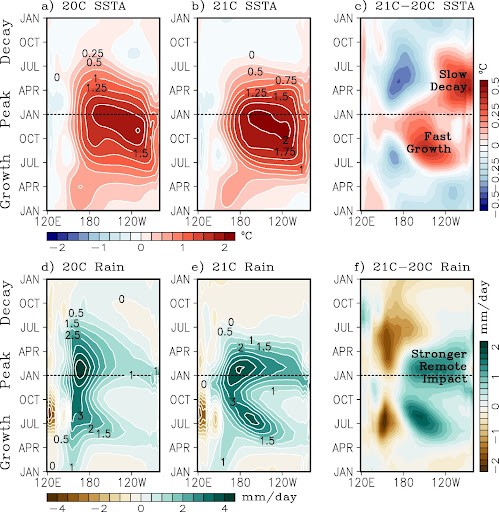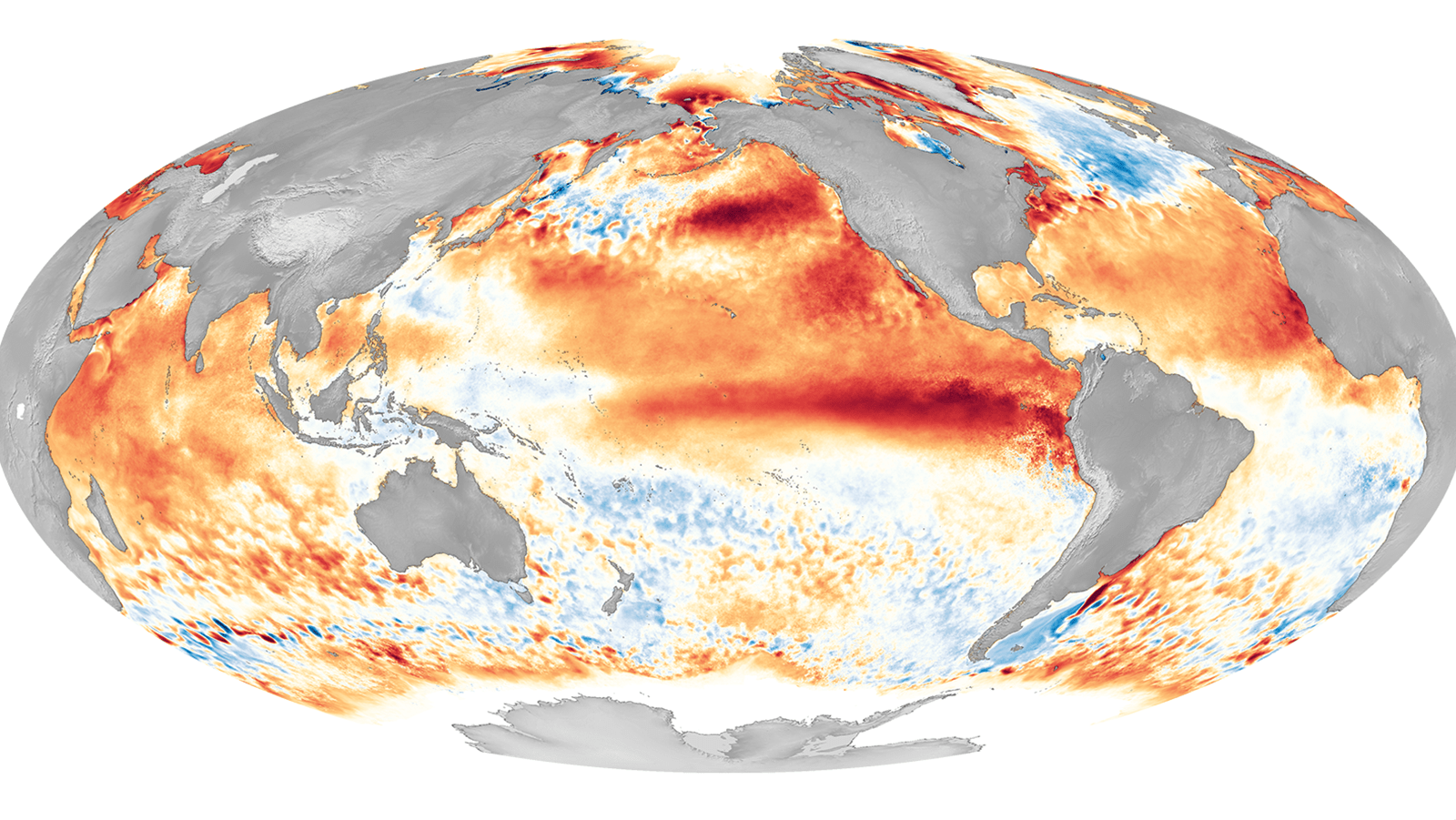In a new study published in Nature Communications, scientists at NOAA’s Atlantic Oceanographic & Meteorological Laboratory (AOML) investigate the projected changes in the seasonal evolution of El Niño – Southern Oscillation (ENSO) in the 21st century under the influence of increasing greenhouse gases. The study found that global climate impacts on temperature and precipitation are projected to become more significant and persistent, due to the larger amplitude and extended persistence of El Niño in the second half of the 21st Century (2051-2100).
ENSO is a recurring climate pattern that occurs on average from 2 to 7 years, which involves changes in the sea surface temperature in the central and eastern Pacific Ocean. The oscillating warming pattern, or El Niño, directly affects rainfall patterns in the tropics, as well as strongly influences weather across the globe.

El Niño events can be characterized by three phases, the onset (the growth), peak (the mature), and decay (the demise) phase. Most previous studies focused on future changes of ENSO during the peak phase. In contrast, this study focuses on future changes in the seasonal evolution of ENSO during the onset and decay phases.
The onset and decay phases have direct impacts on climate and extreme events around the globe, such as monsoon rainfall, tropical cyclones, and tornado outbreaks in the U.S. Therefore, there is an urgent need to better understand ENSO characteristics under the influence of increasing greenhouse gasses, and their impacts on climate variability and predictability.
The study found that El Niño is projected to grow at a faster rate, persist longer over the eastern Pacific, and have stronger and distinct remote impacts. A 20% increase in the frequency of El Niño occurrence is expected in the 21st century when compared to the expected natural variability. This finding also suggests that anthropogenic influence on El Niño occurrence will emerge on top of the natural variability by 2051-2100.

“The lead time for skillful seasonal El Niño forecasts may be reduced in the future, due to the faster growth of El Niño, and the remote climate impacts on temperature and precipitation may be exacerbated, owing to the slower projected decay of El Niño events in the future,” said Hosmay Lopez, NOAA AOML scientist and lead author of the study.
This is the first attempt to report on the future projected changes in the space-time evolution of ENSO by providing a complete analysis on not just changes in the statistics of ENSO but also providing a dynamical framework as well as changes in the remote impacts. This study provides a significant advancement in the understanding of future projected changes in ENSO characteristics and their impacts on climate variability and predictability.
Lopez, H., Lee, S. K., Kim, D., Wittenberg, A., & Yeh, S. W. (2022). Projections of faster onset and slower decay of El Niño in the 21st century. Nature Communications 13, 1915 https://doi.org/10.1038/s41467-022-29519-7
